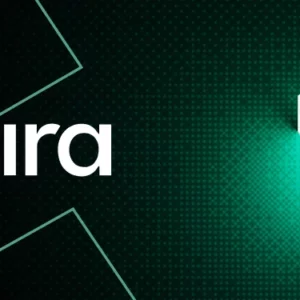This article may contain references to products or services from one or more of our advertisers or partners. We may receive compensation when you click on links to those products or services. Nonetheless, our opinions are our own.
The information presented in this article is accurate to the best of our knowledge at the time of publication. However, information is subject to change, and no guarantees are made about the continued accuracy or completeness of this content after its publication date.
When it comes to investing for the future, especially for something as critical as retirement, you might expect the institution managing those funds to ensure robust growth and security. The Canadian Pension Plan Fund (CPP Fund) is one such institution that plays a vital role in the financial lives of millions of Canadians. However, recent analyses tell a different story—a narrative of high fees associated with its active management structure not yielding the expected returns. Over the last five years, this active approach has significantly lagged behind passive index benchmarks. To understand the ramifications of this trend, we’ll look at the performance of the CPP Fund and what it means for your retirement savings. Whether you’re a current contributor or simply interested in how Canada’s largest pension fund operates, understanding these dynamics is crucial for making informed financial decisions.
- Understanding the Canadian Pension Plan Fund’s Active Management Approach
- How High Fees Affect Your Retirement Savings
- The Importance of Benchmarking: Passive Index vs. Active Structure
- Lessons Learned from Five Years of Underperformance
- Taking Control: How to Make Informed Decisions About Your Investments
- Frequently Asked Questions
- Recommended Reads
Understanding the Canadian Pension Plan Fund’s Active Management Approach
The Canadian Pension Plan Fund (CPP) employs an active management approach to capitalize on market inefficiencies and generate higher returns than passive strategies. While this method can potentially lead to meaningful gains, it has been scrutinized, especially when juxtaposed with its index counterparts. You may wonder how an active approach can lag behind passive benchmarks, particularly given the higher fees typically associated with actively managed funds. Here are some factors to consider:
- Market Timing Challenges: Active managers must accurately predict market movements, which is inherently difficult. In some instances, their timing may not coincide with market trends, leading to missed opportunities.
- High Fees: The costs associated with active management can eat into profits, especially when returns do not outperform low-cost index funds.
- Long-Term Performance Metrics: Assessing performance over longer periods is essential, as short-term volatility can sometimes skew perceptions of success.
Let’s take a closer look at the comparative performance of the CPP Fund’s active management versus a passive index over the past five years:
| Year | Active Management Return (%) | Passive Index Return (%) |
|---|---|---|
| 2019 | 8.5 | 10.2 |
| 2020 | 5.0 | 7.5 |
| 2021 | 9.3 | 12.0 |
| 2022 | -1.2 | 2.3 |
| 2023 | 4.7 | 6.9 |
This data encapsulates the complex nature of active versus passive management. Although active management aims to outperform, the results often reveal a different picture. Understanding these dynamics can empower you to make informed decisions regarding your investment strategies.
How High Fees Affect Your Retirement Savings
You don’t want high fees to erode your hard-earned retirement savings. While active management aims to outperform the market, the reality often falls short, especially when compared to low-cost passive index funds. A high management fee can eat into your returns, leaving you with less than you anticipated when retirement arrives. Consider these key points:
- Compounding Costs: High fees reduce your principal and diminish your compounding growth over the years.
- Performance Gaps: Many actively managed funds lag behind their benchmarks, meaning you may pay more without receiving better performance.
- Risk of Overconfidence: Fund managers can sometimes overestimate their ability to beat the market, leading to poor investment choices that further drag down returns.
To illustrate this further, let’s compare returns between high-fee active funds and low-fee passive index funds:
| Year | High-Fee Active Fund Return (%) | Low-Fee Passive Index Return (%) |
| 1 | 6 | 8 |
| 2 | 5 | 9 |
| 3 | 4 | 10 |
| 4 | 3 | 7 |
| 5 | 2 | 11 |
By choosing lower-fee investments, you can significantly enhance your future financial security. Take control of your retirement savings today by carefully evaluating the fees associated with your investment choices—your future self will thank you!
Voted "Best Overall Budgeting App" by Forbes and WSJ
Monarch Money helps you budget, track spending, set goals, and plan your financial future—all in one app.
Get 50% OFF your first year with code MONARCHVIP
The Importance of Benchmarking: Passive Index vs. Active Structure
When weighing investment approaches, it becomes evident that understanding how various structures perform against benchmarks is crucial. The disparity between the high-fee active structures prevalent in many Canadian pension plans and the more modestly priced passive index funds can be stark. Over the past five years, funds operating on active management strategies have frequently underperformed their benchmarks, raising vital questions about value and efficiency.
Consider these key factors that underscore the significance of benchmarking:
- Performance Tracking: Regularly measuring active management performance against passive benchmarks reveals whether you receive value for your fees.
- Cost Efficiency: Active funds generally have higher expense ratios. If they aren’t consistently outperforming their benchmarks, those fees can reduce returns.
- Investment Strategy Clarity: Benchmarking provides insight into whether a fund’s strategy aligns with your investment goals, guiding you toward more informed choices.
| Investment Type | Average Annual Return (5 Years) | Average Expense Ratio (%) |
| Active Management | 4.5 | 1.2 |
| Passive Index Funds | 7.1 | 0.1 |
Lessons Learned from Five Years of Underperformance
Reflecting on the last five years, it becomes evident that the high-fee active management structure has struggled significantly against its passive index benchmark. This experience highlights several important points worth considering for your investment strategy:
- The Cost Factor: High fees can significantly erode investor returns over time. A dollar spent on fees is a dollar that does not work for your portfolio.
- The Value of Simplicity: Simpler, passive investment strategies have consistently provided better returns. Sometimes, less truly is more when it comes to investing.
- The Importance of Transparency: Understanding where your money is invested and how fees are structured can empower you to make better financial decisions.
| Investment Type | 5-Year Return (%) | Average Fee (%) |
| High-Fee Active | 2.5 | 1.5 |
| Low-Fee Passive | 8.1 | 0.2 |
Taking Control: How to Make Informed Decisions About Your Investments
Understanding the performance of investment structures is crucial for your financial growth. Over the past five years, the Canadian Pension Plan Fund (CPP) has showcased an intriguing trend: its high-fee active management approach has consistently underperformed against passive index benchmarks. Here are some key points to consider:
- Cost vs. Value: The high fees associated with active management can erode your returns. It’s essential to assess whether the promised benefits justify the expense.
- Market Trends: Passive investing often more accurately reflects market performance, avoiding the pitfalls of underperforming managers who can’t consistently beat the market.
- Long-Term Strategy: Focusing on low-cost, diversified index funds can help you build a sustainable investment strategy over time.
| Investment Type | Average Annual Return (5 Years) | Typical Fees (%) |
| Active Management | 5.2 | 1.5 – 2.5 |
| Passive Index Funds | 8.1 | 0.1 – 0.5 |
Frequently Asked Questions
What is the Canadian Pension Plan Fund?
The Canadian Pension Plan Fund is a national investment fund that manages the revenues generated from contributions to the Canada Pension Plan (CPP). It is designed to ensure that the CPP can pay pensions to retirees while maintaining its financial sustainability over the long term.
What are the potential reasons for the underperformance?
Several factors could contribute to the underperformance, including market volatility, misjudgments in security selection, high management fees, and the challenge of consistently beating the market.

Reviewed and edited by Albert Fang.
See a typo or want to suggest an edit/revision to the content? Use the contact us form to provide feedback.
At FangWallet, we value editorial integrity and open collaboration in curating quality content for readers to enjoy. Much appreciated for the assist.
Did you like our article and find it insightful? We encourage sharing the article link with family and friends to benefit as well - better yet, sharing on social media. Thank you for the support! 🍉
Article Title: CPP Fund’s High-Fee Active Strategy Trails Passive Index Over 5 Years
https://fangwallet.com/2025/03/16/cpp-funds-high-fee-active-strategy-trails-passive-index-over-5-years/The FangWallet Promise
FangWallet is an editorially independent resource - founded on breaking down challenging financial concepts for anyone to understand since 2014. While we adhere to editorial integrity, note that this post may contain references to products from our partners.
The FangWallet promise is always to have your best interest in mind and be transparent and honest about the financial picture.
Become an Insider

Subscribe to get a free daily budget planner printable to help get your money on track!
Make passive money the right way. No spam.
Editorial Disclaimer: The editorial content on this page is not provided by any of the companies mentioned. The opinions expressed here are the author's alone.
The content of this website is for informational purposes only and does not represent investment advice, or an offer or solicitation to buy or sell any security, investment, or product. Investors are encouraged to do their own due diligence, and, if necessary, consult professional advising before making any investment decisions. Investing involves a high degree of risk, and financial losses may occur including the potential loss of principal.
Source Citation References:
+ Inspo
There are no additional citations or references to note for this article at this time.












































